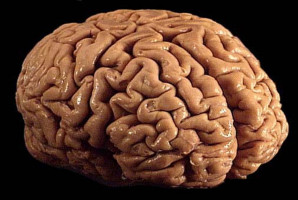
Research is shedding light and potentially expanding options for patients living with Medulloblastoma, an aggressive childhood cancer.
Medulloblastoma is a cancer impacting both very young and school aged children.
When children get this type of brain tumour, they experience the process of the tumour blocking flow of fluid around the brain.
This can cause severe headaches, vomiting, sleepiness, fussiness, and difficulty walking and coordinating movements.
Treatment is intense, involving high-dose chemotherapy, surgery, and sometimes radiation or stem cell transplants.
During these months long treatments, children may lose hair, lose weight, be unable to eat and experience lots of upset stomachs.
Medulloblastoma is also a complex disease with many different genetic causes, making a one-size-fits-all approach to treatment impossible.
“Unfortunately, many patients with certain forms of medulloblastoma do not respond well to treatment,” said John Prensner, M.D., Ph.D., Assistant Professor of Pediatrics and Biological Chemistry and one of the study’s senior authors.
“This research is critical in helping us begin to understand how medulloblastoma works on a genetic and cellular level so that patients can be treated, and new therapies can be developed, accordingly.”
The research
Prensner’s group paired up with the team of Sebastiaan van Heesch, Ph.D., research group leader at the Princess Máxima Center for paediatric oncology in the Netherlands, to examine several groups of patients, some of which experienced the most aggressive form of the cancer and had the poorest outcomes.
Many of those patients had biological and genetic factors that exacerbated their cancers, including the cancer gene MYC.
Prensner’s team and their collaborators took a new hypothesis on how MYC might be functioning and how that might be implicated in cancer.
“The twist that we put on it is to ask the question, what if this MYC is doing important functions outside of what we know to be genes in these cancer cells?” Prensner said.
Damon Hofman, a Ph.D. student in the Van Heesch group at the Princess Máxima Center and one of the first authors of the study, added: “For the first time, we identified and studied the role of essential microproteins in medulloblastoma.
“The micro-protein ASNSD1-uORF appeared to be essential for MYC cancer cells. The fact that these previously overlooked tiny proteins are so important for the survival of this kind of cancer cell is fascinating and underscores the importance of expanding research into other childhood cancers.”
With further understanding of MYC and other genetic, biological, and cellular factors, providers can then learn how to intervene with these cancers.
Furthermore, the research could support development of therapeutics that could target the molecular process allowing cancer cells to grow.
This study may be newer, but Prensner’s interest in medulloblastoma is not.
His experience began early when he was a medical student; he was moved by the patients he met who were living with the tumour.
“I've never forgotten, not just the patients, but the families. That's why it's been so important to me to try to use the interests and training that I have in the scientific fields to think about how we can really unlock new areas of understanding about this disease to get these patients better choices,” he said.
“Translation of non-canonical open reading frames as a cancer cell survival mechanism in childhood medulloblastoma,” Molecular Cell.
We are an independent charity and are not backed by a large company or society. We raise every penny ourselves to improve the standards of cancer care through education. You can help us continue our work to address inequalities in cancer care by making a donation.
Any donation, however small, contributes directly towards the costs of creating and sharing free oncology education.
Together we can get better outcomes for patients by tackling global inequalities in access to the results of cancer research.
Thank you for your support.